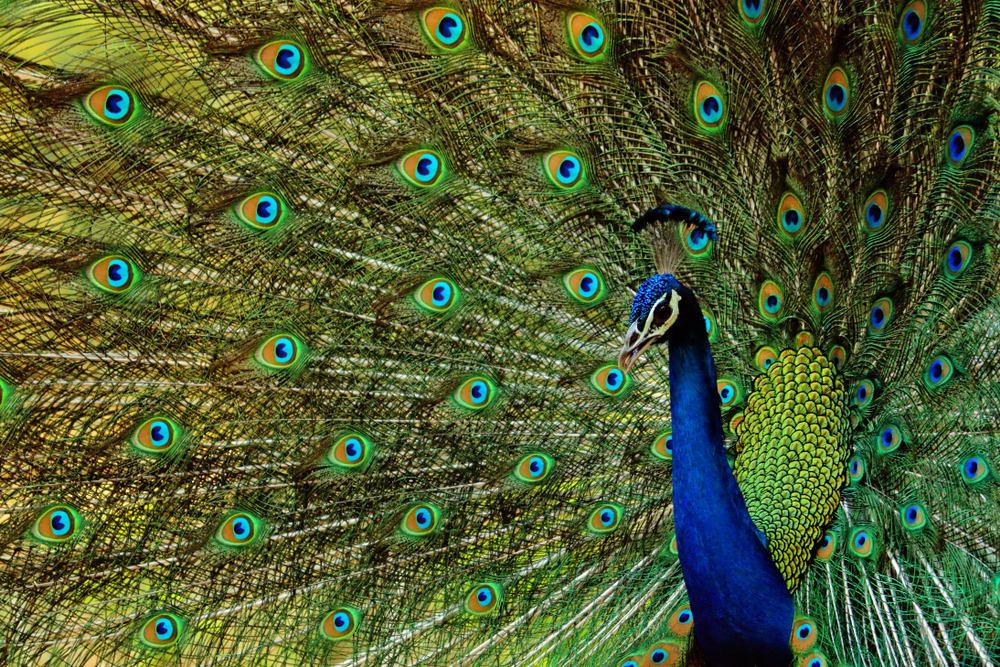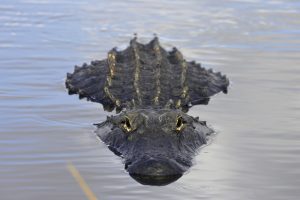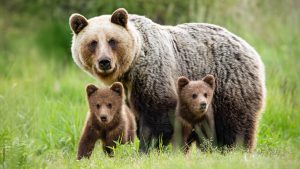Since ancient times, people have been mesmerized by the glistening colors of a peacock’s tail feathers. It’s one bird that you’ll never tire of.
However, what are the different colors they exhibit and how do the peacocks get these hues?
Peacock’s tail feathers are known for their iridescent colors, which include shades of yellow, brown, green, and blue.
The peacock feathers’ color sources come from photonic crystals and pigments; they can reflect light at many wavelengths, depending on the light’s angle and the crystals’ spacing.
Table of Contents
Where Do Peacocks Get Their Colors?
When it comes to peacock feathers, photonic crystals and pigments aren’t the only color origin. Feathers reflect light at varying wavelengths because of this mix.
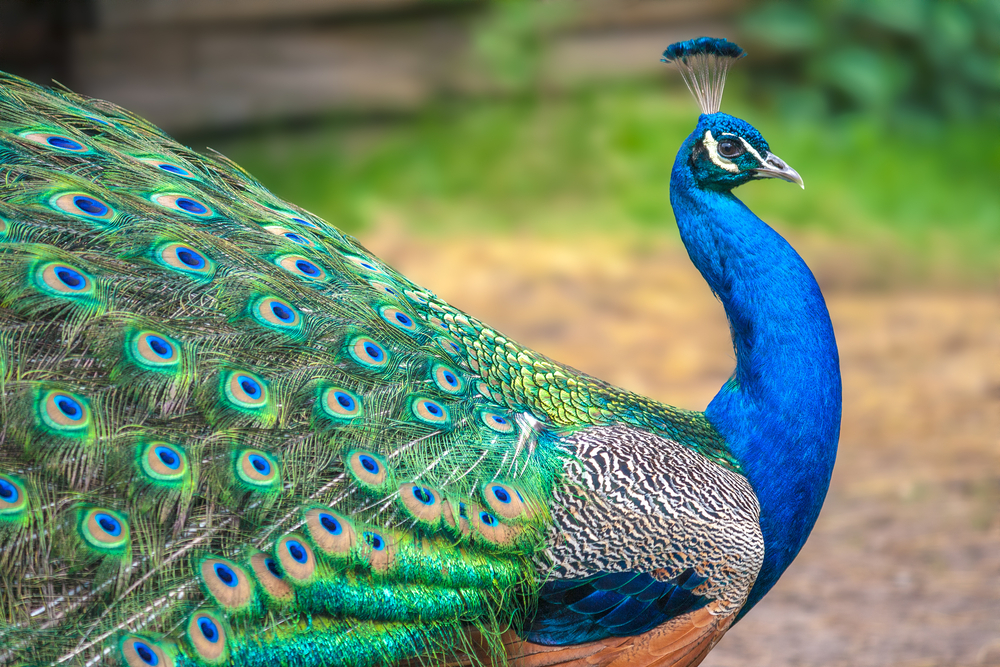
When the light is positioned at a certain angle, it can produce a variety of effects. In the end, the peacock’s feathers take on the iridescent hues of green, blue, yellow, and brown.
What Colors Are Peacocks?
Peacocks come in a variety of colors including:
Iridescent Blue Peacocks
The blue peacock, officially known as the Indian peacock, has a deep, iridescent blue on its neck and head.
The green peacock, on the other hand, comprises a copper and green coloration.
A crystalline lattice comprising as many as twelve rods includes melanin and a color pigment that combine to make the peacock’s brilliant colors.
The rods are separated by 140 nanometers, which results in the spectator seeing light reflected at wavelengths within the blue range.
Green Peacocks
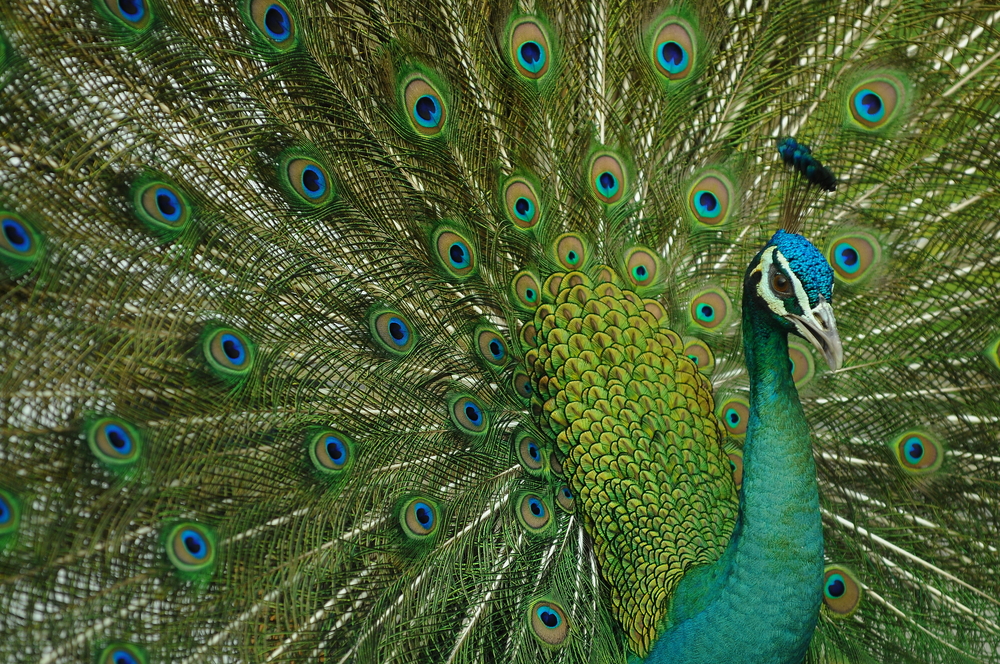
There are three subspecies of green peacocks: Burmese green, Indo-Chinese green, and Java green, and all have green heads and necks.
Both the Green and Blue peacock species have their tail plumes decorated with “eyes”.
There are approximately 10 rows of 150 nm spacing in a square lattice that produces the green peacock’s color. Reflected wavelengths of light fall within the green range when they strike this structure.
Brown and Copper Peacocks
In both species of peafowl, the body and tail are covered in varying colors of brown and copper.
Mutations of this species can also be seen that are almost entirely brown. The Buford bronze, for example, has brown spotted eyes along with a chocolate brown tail.
Only a small number of peafowls have been bred to have plumes with lattices consisting of around four rods spaced between 150 and 185 nm apart, resulting in these mutations.
Yellow-Orange Peacocks
Up close, a peacock’s feather resembles a quill with many different colored strands. Each strand comprises barbules, which are feather-like filaments.
Even though the peacock’s feathers aren’t always yellow, they do endorse the bird’s looks across the board.
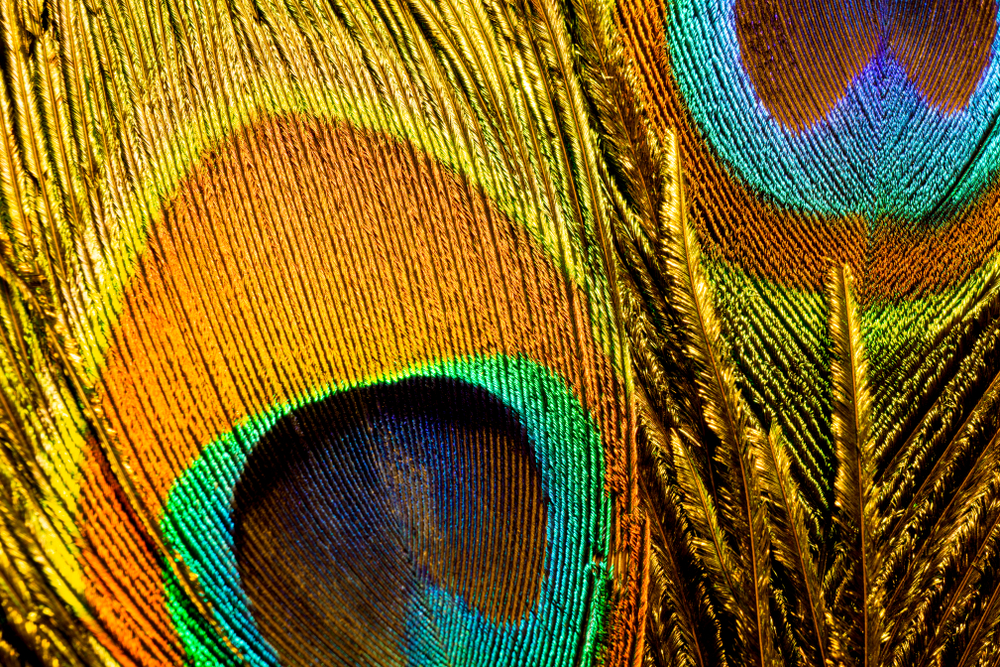
A crystal lattice of roughly six rods, all 165 nm apart, is used to create the yellow-orange color in these peacocks
Peacocks with Colors Created by Pigments and Lattice Patterns
Different lattice patterns and pigments are used to create different shades of white and various colors, such as purple.
Peacocks that are half or entirely white are the result of a disease known as leucism.
Rather than being a distinct species, like the blue or green peacock, these peacocks are simply variations of the original species.
How Can We Distinguish Between Male and Female Peafowl?
In comparison to the peahen, the male peacock is distinguished by its more striking tail feathers. Male peacocks are most often what people picture when they think of these birds.
A peahen is a female peafowl, just like a hen is a female chicken. They’ve long been admired and even revered as a member of the pheasant family.
The Indian peafowl was revered by the Hindus and remains the country’s national bird. The cawing of the green peafowl, which is less notable in the west, is just as piercing as that of its cousin, the white peafowl.
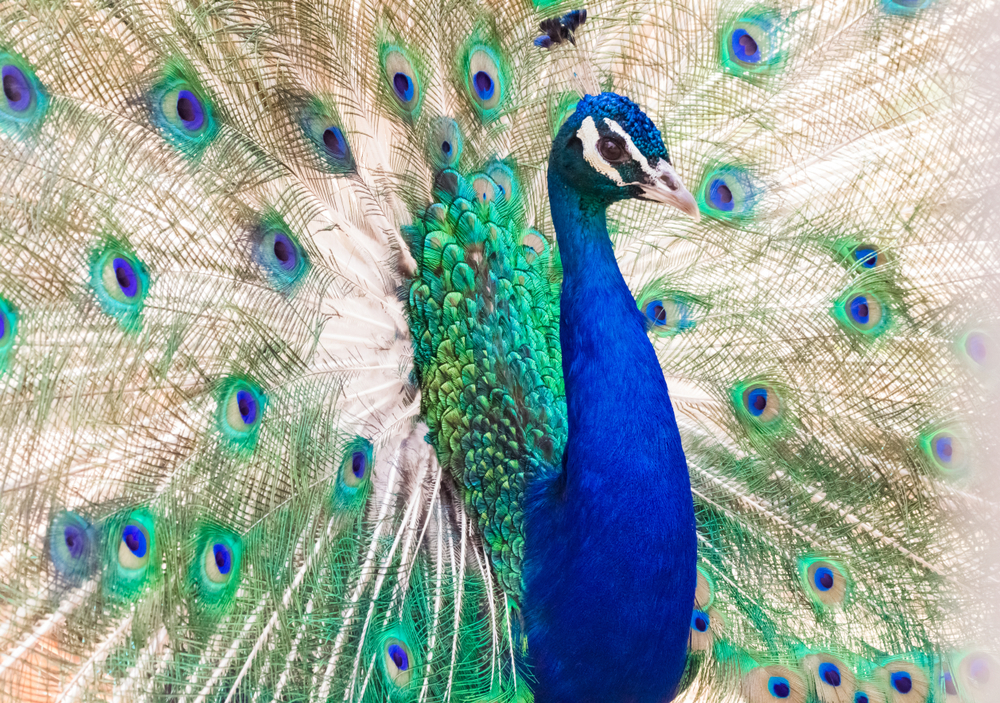
As you might expect, peahens don’t have as much color in their tails as the males, which are better known as “trains,” and this is for a good reason.
For them to nurture their young without drawing the attention of predators, they must preserve their distance and be able to stay hidden.
Peachicks are the name given to the young.
Eye-like Feature Helps Distinguish Peacocks
There are an estimated 200 or more distinct feathers in a peacock’s green and bronze plume, and the placement of the eye-like spots on the feathers makes it possible to tell one peacock from another.
The iridescent bronze, blue, and green “eyes of God” are evident when the bird is fully displayed during courtship, and this is the reason for the adulation the bird has earned over the years.
As a general rule, women like well-groomed and well-presented males. When it isn’t on exhibit, the train extends 60% of the peacock’s full length and is hauled behind it.
The train is separate from the tail feathers, which it hides behind.
Both the train and the brightly colored tail feathers of Indian peafowl females are absent in peahens.
Coloration is Also a Major Distinguishing Factor
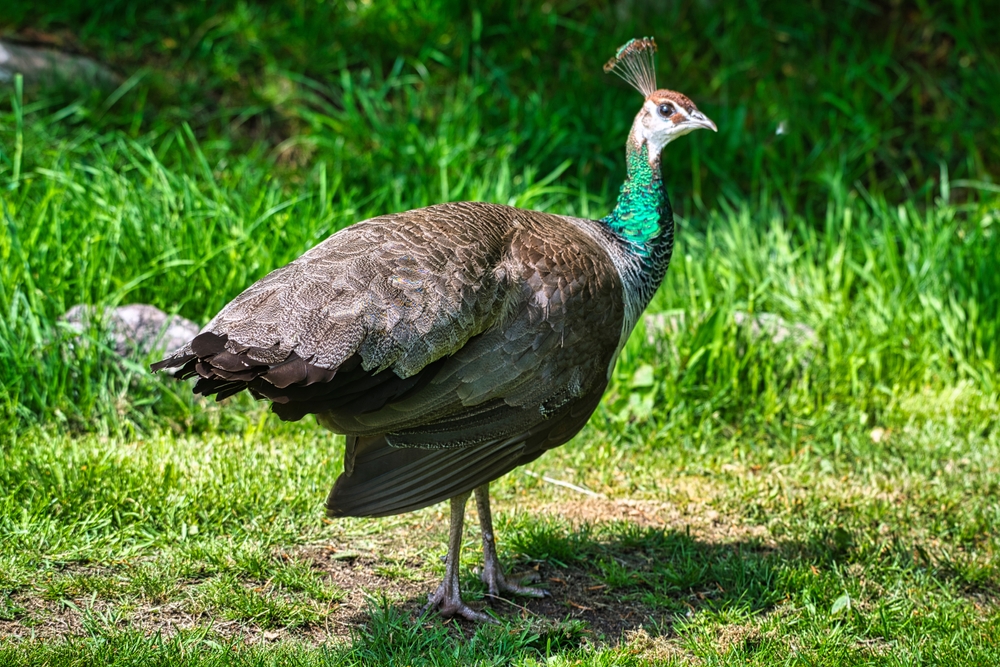
You can differentiate peacocks and peahens in India by their coloring if the train is not adequate.
There are two types of peacock feathers: those of the male and those of the female.
Besides a kind of blue ring encircling her neck, a peahen’s coloring is quite similar to that of one of her chicks, making it difficult to tell her apart.
While she’s nesting, she uses the camouflage of her brown feathers to hide from predators.
What Are the Javanese Relatives of Peacocks?
Southeast Asia is home to green peafowl, which are found in China, Thailand, Myanmar, and Vietnam.
Java peafowl is another name for them, as they are indigenous to Java and Indonesia.
To tell the male peacocks from the peahens, you need to look at their flamboyant train.
In both cases, the birds’ plumage is mostly green, but with blue, bronze, and reddish-brown flecks.
The sole difference between the sexes is that the female bird’s colors are a tad duller. Green peafowl chicks look like females.
Peacocks Enjoy Showing Off
Their massive tail plumage and vividly colorful heads distinguish peacocks from other birds.
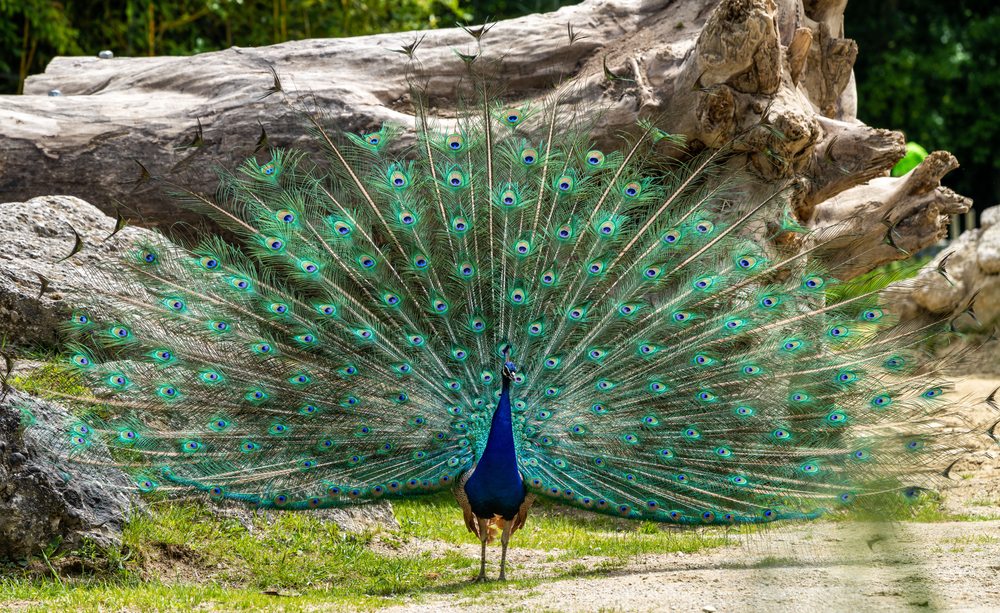
This species is well-known for its huge courtship show of flowing tail feathers garnished with blue-green eyes.
This display makes peacocks easy to spot and a popular bird for adorning beautiful gardens and other outdoor spaces.
What Are the Most Recognizable Peacock Species?
Sri Lanka and India, among other eastern Asian countries, are home to the Indian peacock, the most well-known peacock species.
Tail plumage is employed in courtship rituals and the peacock’s head and crests are brightly colored with blue hues.
Peacocks use their vivid colors and huge tail feathers to lure peahens and to compete with other peacocks in size.
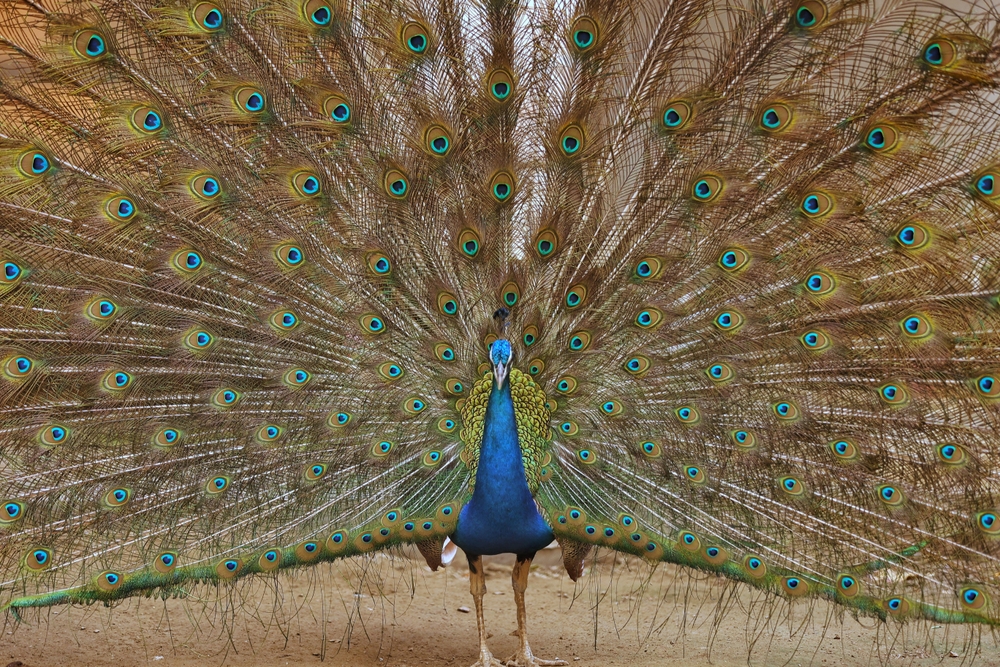
To help them blend into the background while tending to their peachicks, Indian peahens have a muted brown coloring with blue or green heads as well as smaller tail parts.
What Is the Green Peacock?
Tropical Southeast Asia is home to the Javanese peacock (officially called the green peacock). Peacocks in the green family are comparable to Indian peacocks due to their long, colorful tails and also display their plumage during the mating season.
Green peacocks are distinguished from Indian peacocks by their crests and heads not being blue, but instead a deep green shade.
Additionally, green peahens have a vibrant appearance.
When compared to their male counterparts, they have a shade of green that is just slightly more muted.
In contrast, the green peahen lacks the large tail feathers of the Indian peahen.
Most Recently Discovered Peacock Species
The Congo peacock, an African native that looks more like a regular pheasant than their flamboyant peacock cousins, was just recently discovered.
The males of this species are diminutive in comparison to other species due to their lack of lengthy, brilliantly colored trains and blue coloring.
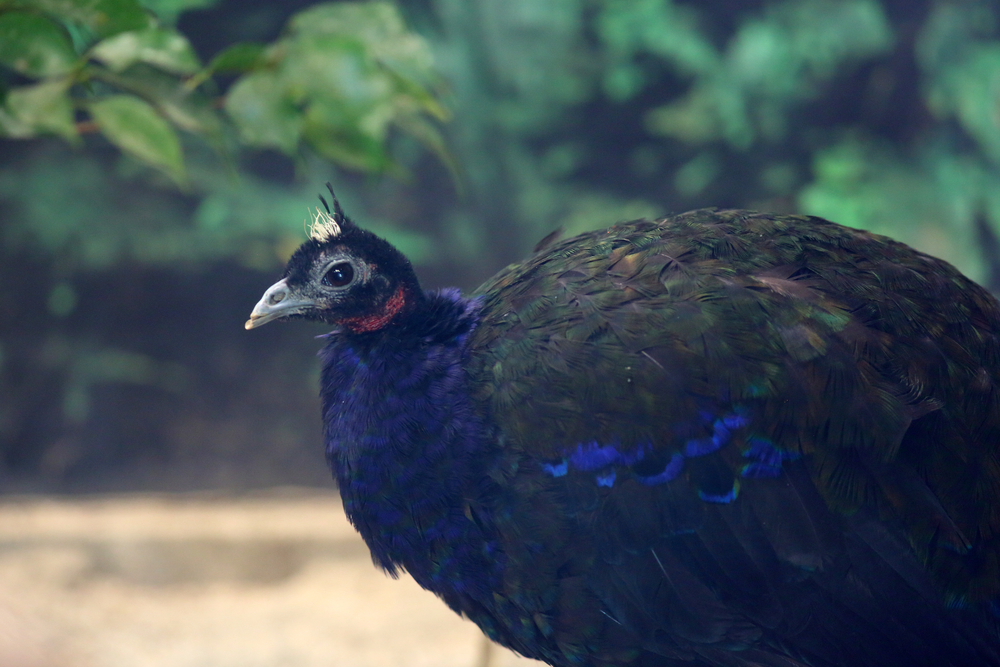
Flecked brown and green, the Congo peahens bear an uncanny resemblance to baby peacocks.
The Association of Zoos and Aquariums (AZA) has established a project to assist, protect and upkeep the habitat and communities of the Congo peafowl viewed as endangered.
Understanding the Peacock Variations
Peacocks can be found outside of the regular range of Green and Indian peacock colors, thanks to selective breeding and mutations.
White peacocks are not albinos. Instead, their coloring is the result of leucism (diminished pigmentation in skin and feathers) making them completely white from train to crest.
Peacocks also come in different colors, including black and brown peacocks as well as yellow and purple ones; these are all simple modifications from the classic green or Indian variety.
How Long Do Peacocks Take to Develop Their Plumage?
The tail plumage of a peacock takes three years to develop. For the first few months of their lives, female and male peachicks look the same.
The dazzling display tails of an adult male can be seen only after three years of age when the bird has reached sexual maturity.
Peahens are attracted to their captivating plumage.
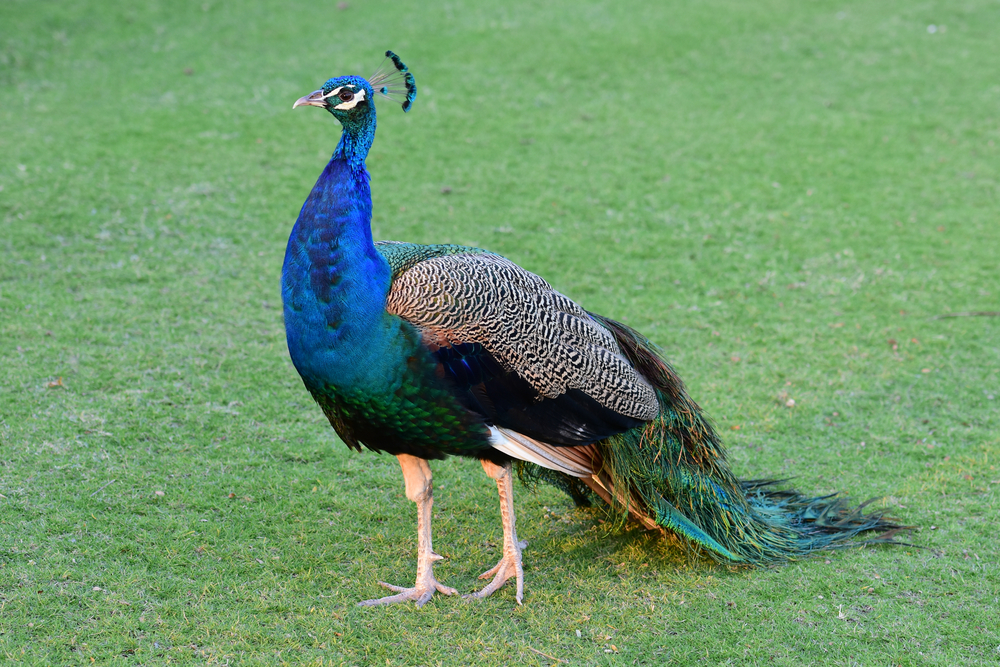
Throughout this visual display, the hens can determine how healthy the males in their area are by observing how the spots appear to be floating above shimmering backgrounds.
Feathers’ bright colors are thought to attract female birds, while some think that they guard the birds against predators by fending off attacks.
There is also proof that peahens choose their mates based on vibrations, dancing (feather movement and shaking), as well as the sound of peacock trumpets.
How to Get Peacock Feathers
It isn’t necessary to slaughter a peacock to obtain its feathers. Lucky for you, every year, following the mating process, the bird loses its train as well as the feathers may be collected and sold without harming the bird.
A wild peacock’s life span is approximately 20 years.
What Is the Importance of the Peacock’s Crest?
The crest of a peacock serves as a mating detection device. When it comes to mating, female peacocks have special crest sensors that enable them to pick up the motions of a potential partner from great distances.
The feathers are designed to quiver at the same speed as the displaying peacock’s tail, as per The Atlantic.

To draw the interest of the female, a male peacock fans out its tail at a speed of 26 times per second, causing a blast wave that vibrates the peahen’s head.

